ATOMIN Day
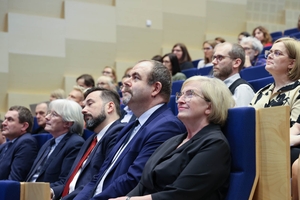 On April 11, 2024, the ATOMIN DAY seminar was held at the Faculty of Chemistry of the Jagiellonian University. It was a summary of the completion of the investment part of the ATOMIN 2.0 infrastructure project - the largest (total implementation cost over PLN 100 million) infrastructure project implemented jointly by the Faculty of Chemistry and the Faculty of Physics, Astronomy and Applied Computer Science of the Jagiellonian University, the aim of which was to strengthen and expand the equipment park of the mentioned Faculties and ensure adequate access to this infrastructure for interested parties (including external entities).
On April 11, 2024, the ATOMIN DAY seminar was held at the Faculty of Chemistry of the Jagiellonian University. It was a summary of the completion of the investment part of the ATOMIN 2.0 infrastructure project - the largest (total implementation cost over PLN 100 million) infrastructure project implemented jointly by the Faculty of Chemistry and the Faculty of Physics, Astronomy and Applied Computer Science of the Jagiellonian University, the aim of which was to strengthen and expand the equipment park of the mentioned Faculties and ensure adequate access to this infrastructure for interested parties (including external entities).
Seminar participants could get to know the people involved in preparing and implementing the project, learn about the history of the ATOMIN 2.0 project and its predecessor, the ATOMIN project, and, above all, see the prospects for the development of materials research carried out by researchers at both Faculties. The latter became tangible during the presentation of individual research stations carried out by their users as part of the project.
Scholarship of the Minister of Science and Higher Education for Ms. Agata Grabska.
Ms. Agata Grabska received a scholarship from the Minister of Science and Higher Education (MNiSW) for the academic year 2023/2024 for significant scientific, artistic or sports achievements.
Ms. Agata Grabska is a fifth-year student of biophysics, her master's thesis titled "Analysis of the nanostructure of fibrin clots fixed with various organic fixatives" is prepared at the Department of Medical Physics under the supervision of prof. Ewa Stępień.
One of the achievements submitted for the award of the Ministry of Science and Higher Education is the presentation entitled "Comparison of the fresh and fixed blood clots with PALS technique" at the conference "Applications of radiation detection techniques in fundamental physics, food control, medicine and biology" in Frascati, in Laboratori Nazionali di Frascati (LNF - INFN), Italy.
Congratulations!!!
Opening ceremony of the new POLYX beamline in SOLARIS
On 1 March 2024, the official opening ceremony was held for the POLYX beamline which is used to X-ray microimaging and X-ray microspectroscopy in the energy range 4-15 keV. POLYX enables imaging of 2D and 3D structure, elemental distribution, and chemical phases in investigated samples. The infrastructure was created in close cooperation with scientists from the Jagiellonian University, the AGH University of Science and Technology and the Institute of Nuclear Physics, Polish Academy of Sciences. The originator of the line and its coordinator is prof. Ph.D. Paweł Korecki from our Institute.
The ceremony began with a welcome to the guests by Prof. Marek Stankiewicz, Cooperation Representative of the SOLARIS National Synchrotron Radiation Centre. He welcomed the guests: Prof. Piotr Kuśtrowski, Vice-Rector for Research of the Jagiellonian University, Prof. Zbigniew Postawa, Director of the Institute of Physics, Faculty of Physics of the Jagiellonian University, Prof. Jakub Rysz, Vice - director of the Institute of Physics, Faculty of Physics, Jagiellonian University, Prof. Jacek Kołodziej, Head of Department of Synchrotron Radiation Institute of Physics of the Jagiellonian University, prof. Zbigniew Sojka, Faculty of Chemistry of the Jagiellonian University, Prof. Bogdan Fornal of the IFJ PAN, Prof. Wojciech Kwiatek, IFJ PAN, Prof. Tomasz Ślęzak, Vice-Dean of the Faculty for Science and Cooperation of the AGH University of Science and Technology, Prof. Magdalena Szczerbowska-Borukowska, Head of the - Department of Medical Physics and Biophysics, Faculty of Physics and Applied Computer Science, AGH University of Science and Technology and Joanna Czapla-Masztafiak, PhD, DSc, from IFJ PAN.
He thanked the entire SOLARIS Team for their involvement in the construction of the POLYX beamline, in particular: Prof. Paweł Korecki, Dr. Katarzyna Sowa, Dr. Tomasz Kołodziej and Dr. Paweł Wróbel.
The next speaker was Prof. Paweł Korecki, who presented the history of the beamline, talked about the technical specification and application, as well as about the first successes of the team and the research carried out. The line is unique in that it is the first X-ray beam that comes out of a vacuum from the SOLARIS ring and can be used to conduct research in the air. I sent the first e-mail with the concept of the line in December 2016 and the final line was put into operation in September 2023 and we are still working on improving it - said prof. Paweł Korecki
During the event, the contribution of the work and commitment of the POLYX researchers was repeatedly highlighted. It is thanks to their determination and cooperation between specialists that a unique and compact line for imaging of 2D and 3D structure of objects; elemental distribution mapping; information about speciation and local atomic structure. The name POLYX originates from polycapillary X-ray optics that is used for X-ray focusing and from the possibility of using polychromatic X-rays to increase the X-ray flux from SOLARIS bending magnet in the hard X-ray energy range. It will make it possible to conduct research in biomedical sciences, material science, physics, chemistry, earth science & environmental sciences, cultural heritage.
Guests attending teł Koreckihe opening had the opportunity to see the experimental hall of the SOLARIS Centre and learn more about the research carried out at the synchrotron. Immediately afterwards, there was a symbolic act of opening – cutting the ribbon and taking commemorative photos.The opening date was no coincidence. It is today (1 March 2024) that the spring call for proposals starts and for the first time it is possible to apply for research time on the POLYX infrastructure.

Starting from right to left: prof. Bogdan Fornal, prof. Zbigniew Postawa, prof. Piotr Kuśtrowski, prof. Tomasz Ślęzak, prof. Marek Stankiewicz
Maestro and Sonata-Bis grants for two colleagues from our Institute
 Project pf. "Background-free search for double neutrino-free beta decay and dark cold matter particles" led by Dr. hab. Grzegorz Zuzel, prof. UJ from the Department of Experimental Computer Physics was recommended for funding as part of the 15th edition of the Maestro Competition. Amount of financing: PLN 3,321,576 pln.
Project pf. "Background-free search for double neutrino-free beta decay and dark cold matter particles" led by Dr. hab. Grzegorz Zuzel, prof. UJ from the Department of Experimental Computer Physics was recommended for funding as part of the 15th edition of the Maestro Competition. Amount of financing: PLN 3,321,576 pln.

Project titled "Inertial detection of positron atoms: towards measuring the gravitational interaction on the matter-antimatter system" directed by Dr. Sushil Sharma from the Department of Theory of Nuclear Systems, is on the list of projects recommended for financing as part of the 13th edition of the Sonata-Bis Competition. Amount of financing: 2,453,984 pln.
Congratulations!
Two scientists from the Institute received Bekker NAWA grants.
Piotr Czaja, M.A., and Dr. Rafał Zuzak from the Department of Nanostructure Physics and Nanotechnology received Bekker scholarships.
 Mgr Michał Czaja from the group of prof. E. Lipiec received a scholarship under the NAWA Bekker program for the project entitled: "Photothermal infrared nanospectroscopy reveals the amyloid-β local molecular rearrangements altered by antiaggregation factors." As part of the grant, Czaja will complete a six-month internship at Texas A&M University, in a group working with Prof. Dmitri Kurouski (https://kurouskilab.com/).
Mgr Michał Czaja from the group of prof. E. Lipiec received a scholarship under the NAWA Bekker program for the project entitled: "Photothermal infrared nanospectroscopy reveals the amyloid-β local molecular rearrangements altered by antiaggregation factors." As part of the grant, Czaja will complete a six-month internship at Texas A&M University, in a group working with Prof. Dmitri Kurouski (https://kurouskilab.com/).
 Dr. Rafał Zuzak from the Prof. Group Sz. Godlewski received the Bekker NAWA scholarship for the project entitled: "Atomically precise molecular nanostructures integrated with single-layer 2D devices." Dr. Zuzak will spend 2 years as a postdoctoral fellow in the group of prof. Michael F. Crommie from the University of California, Berkeley (https://physics.berkeley.edu/research-faculty/crommie-group/).
Dr. Rafał Zuzak from the Prof. Group Sz. Godlewski received the Bekker NAWA scholarship for the project entitled: "Atomically precise molecular nanostructures integrated with single-layer 2D devices." Dr. Zuzak will spend 2 years as a postdoctoral fellow in the group of prof. Michael F. Crommie from the University of California, Berkeley (https://physics.berkeley.edu/research-faculty/crommie-group/).
Congratulations!!!
Nature Communications has published the result of the world's most accurate test of the symmetry between matter and antimatter in a positronium atom performed at the J-PET Laboratory.
The J-PET team led by Prof. Paweł Moskal published in Nature Communications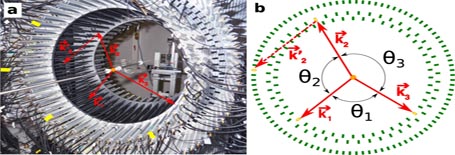
https://www.nature.com/articles/s41467-023-44340-6
an article that describes the results of symmetry tests between matter and antimatter by examining the polarization of photons produced in the annihilation of an electron with a positron. The experiment used positronium atoms made of electron and positron, the lightest components of matter and antimatter. Photons resulting from positronium annihilation have an energy one million times greater than visible photons and their polarization cannot be studied using techniques known from optics and photonics.
The experiment used the method developed by Prof. Moskal published in 2016 in Acta Physica Polonica B
https://www.actaphys.uj.edu.pl/index_n.php?I=R&V=47&N=2#509
in which the direction of photon polarization is measured based on the scattering of photons on electrons in plastic scintillators from which the J-PET tomograph is built.
A photo of the tomograph and the idea of the experiment are shown in the figure:
https://www.nature.com/articles/s41467-023-44340-6/figures/1
Preparing the equipment, performing experiments and analyzing data took 7 years.
The research is co-financed by the National Science Center through grant OPUS-18 No. 2019/35/B/ST2/03562.
The motivation for the research is described in the popular science summary available at the link:
https://projekty.ncn.gov.pl/opisy/464564-pl.pdf
 Among the 24 projects selected in the competition for international research projects in the field of quantum technologies, organized by the QuantERA consortium, there are as many as 8 that will be implemented with the participation of Poles. One of them is Dr. Hab. Adam Wojciechowski from the Faculty of Physics, Astronomy and Applied Computer Science of the Jagiellonian University, who, together with scientists from Germany and Spain, will work on improving the material properties of nanodiamonds.
Among the 24 projects selected in the competition for international research projects in the field of quantum technologies, organized by the QuantERA consortium, there are as many as 8 that will be implemented with the participation of Poles. One of them is Dr. Hab. Adam Wojciechowski from the Faculty of Physics, Astronomy and Applied Computer Science of the Jagiellonian University, who, together with scientists from Germany and Spain, will work on improving the material properties of nanodiamonds.
- QuantERA is a program financing research on quantum technologies with the largest scope in Europe. 101 projects worth EUR 120 million, over 500 research groups from all over Europe, all coordinated by the National Science Center with EU support - says Sylwia Kostka, program coordinator.
Dr. Adam Wojciechowski from the Department of Photonics of the Jagiellonian University is the coordinator of the project "Advanced quantum detection with nanodiamonds". In addition to the Jagiellonian University team, which is the leader of the consortium, teams led by prof. Fedora Jelezko from the University of Ulm and prof. Javier Prior from the University of Murcia.
- Color centers in diamond have become a widely used platform for quantum technologies, including quantum information processing, ultrasensitive detection and photonics. This is due to their unique optical and spin properties, long coherence time and high resistance to external disturbances. Recently, nanodiamonds, i.e. diamond crystals with sizes ranging from several to several hundred nanometers, have also attracted wide attention. They are non-toxic, compatible with various biological and chemical environments, their surface can be easily modified, and they can be integrated into microcircuits
- explains Dr. Hab. Adam Wojciechowski.
The AQuSeND project aims to develop new quantum detection protocols using nanodiamonds. The participating researchers want to demonstrate multi-track detection techniques, e.g. simultaneous detection of changes in temperature and ion concentration using diamond nanoparticles. The sophisticated measurement techniques currently used with macroscopic diamonds will be transferred to the micro- and nanoscale, increasing the potential of nanodiamonds. The project will combine experimental and theoretical approaches to investigate and refine the material properties of nanodiamonds, improve the sensitivity of detection protocols used, and develop a new range of biomedical applications.
The 4th QuantERA network competition was announced in January 2023 by 35 organizations financing scientific research from 28 countries and has enjoyed great interest from the scientific community from the beginning. 101 applications were submitted (56 in the Quantum Phenomena and Resources topic and 45 in the Applied Quantum Science topic), of which 24 winning projects were selected. The winners include as many as 8 research teams from Poland, including 4 with Polish coordinators. 5 projects will receive funding from the National Science Center (scope of basic research), while 3 projects will be financed by the National Center for Research and Development (scope of applied research).
Pan Grzegorz Łukasiewicz uhonorowany nagrodą Polskiego Komitetu Optoelektroniki
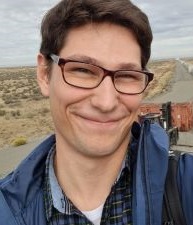 Mr. Grzegorz Łukasiewicz, a PhD student at the Department of Photonics of our Faculty, was honored with this year's award of the Polish Committee of Optoelectronics for the best diploma thesis in the field of optoelectronics. The award ceremony took place on December 11 this year. in Warsaw.
Mr. Grzegorz Łukasiewicz, a PhD student at the Department of Photonics of our Faculty, was honored with this year's award of the Polish Committee of Optoelectronics for the best diploma thesis in the field of optoelectronics. The award ceremony took place on December 11 this year. in Warsaw.
The thesis entitled "Searching for ultralight dark matter using a network of new generation quantum sensors", supervised by prof. Szymon Pustelny (Department of Photonics IFMS), was awarded, even though its main focus was on basic research, not engineering work. Even more so, congratulations!
National Competition named after Professor Adam Smoliński, organized for the 32nd time by the Polish Optoelectronics Committee of the Association of Polish Electrical Engineers (SEP), aims to select the authors of the best diploma theses in the field of optoelectronics, in particular regarding research on basic phenomena, technology and construction of devices and metrological optoelectronic equipment. The awards are funded by institutions interested in the development of this field of technology in the country.
At the Department of Photonics of the Jagiellonian University, a Bose-Einstein condensate of rubidium 87 atoms was produced at a record low temperature of 70 nanokelvins – the lowest ever achieved in Poland.
The condensate was produced by applying the laser cooling technique in an optical dipole trap equipped in a magnetic shield and more versatile than the one that was used in the first Polish experiment carried out in 2005 (also with the participation of researchers from the Jagiellonian University in cooperation with the National Laboratory in Toruń). For condensation to occur, it is necessary to create a cloud of atoms with a relatively high density (above 1013 atoms/cm3) and a very low temperature (below 1 μK). Under such conditions, a phase transition occurs between thermal gas atoms, which involves the macroscopic occupation of the ground state of trapped atoms, while maintaining the mutual coherence of the wave functions of all condensed atoms. This means, among other things, the possibility of observing the wave nature of matter not of individual particles, but on the entire ensemble.

The graphs on the right show the spatial distributions of the densities of the atomic cloud 30 ms after their release from the trap for three phases of evaporative cooling. The Gaussian distribution marked in blue, which well describes the wings of the observed sample, corresponds to the non-condensed fraction of the atoms. However, the narrower peak visible against its background, described by a parabolic red distribution, evidences that the condensation has occurred.
Manuscript published in Review of Modern Physics
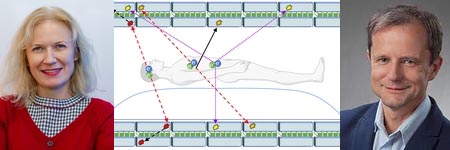 Professors Ewa Stępień and Paweł Moskal (corresponding author) from our Institute published together with Prof. Bass and Prof. Mariazzi article on positronium atoms and the use of positronium atoms in medical diagnosis: https://journals.aps.org/rmp/abstract/10.1103/RevModPhys.95.021002
Professors Ewa Stępień and Paweł Moskal (corresponding author) from our Institute published together with Prof. Bass and Prof. Mariazzi article on positronium atoms and the use of positronium atoms in medical diagnosis: https://journals.aps.org/rmp/abstract/10.1103/RevModPhys.95.021002
The article was published in Review of Modern Physics, the most prestigious physics journal, which publishes only invited articles and Nobel lectures. The Impact Factor of the Review of Modern Physics is over 50.
The drawing showing the scheme of the J-PET tomograph with the annihilations of positronium atoms in a human was chosen for the cover of the magazine.
Competition for the position of an Assistant Professor
RECTOR of the Jagiellonian University announces a selection procedure for the position of an ASSISTANT PROFESSOR
Deadline for submitting documents: 19.06.2023, 12:00 (CET)
Award of the Minister of Education and Science for researchers from our Institute
On February 19, 2023, on the Polish Science Day, the Minister of Education and Science presented awards to outstanding scientists representing various fields of knowledge. The team from our Institute was honored for significant achievements in the field of scientific activity:
- - prof. dr hab. Marcin Wójcik
- - dr hab. Grzegorz Zuzel, prof. UJ
- - dr Marcin Misiaszek
The prize was awarded for: "Fundamental contribution to the BOREXINO experiment, which made it possible to measure pp and CNO solar neutrino fluxes".
More information can be found here.
Congratulations!!!
Professor nomination - prof. Szymon Pustelny
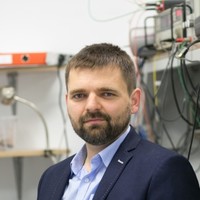 On 23 January 2023 the President of the Republic of Poland Andrzej Duda signed the professor nomination of dr hab. Szymon Pustelny from our Institute.
On 23 January 2023 the President of the Republic of Poland Andrzej Duda signed the professor nomination of dr hab. Szymon Pustelny from our Institute.
Congratulations !!!
Award of the City of Krakow 2022 for Dr. Adam Wojciechowski
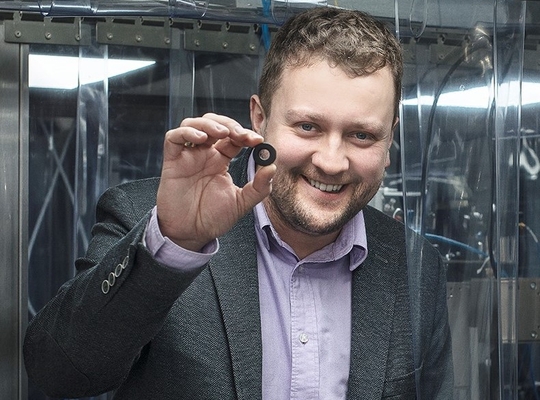 Dr. Adam Wojciechowski from our Institute became the winner of the Team Award of the City of Krakow 2022 in the field of "Science and Technology" for "developing and creating an innovative, unique in Poland, system for microscopy of stimulated Raman scattering". This breakthrough technique allows you to image biomedical samples quickly, with high resolution and sensitivity, entering clinics to help diagnose and treat numerous civilization diseases. Apart from Dr. Wojciechowski, the awarded team included prof. Małgorzata Barańska and Dr. Krzysztof Brzozowski from the Faculty of Chemistry.
Dr. Adam Wojciechowski from our Institute became the winner of the Team Award of the City of Krakow 2022 in the field of "Science and Technology" for "developing and creating an innovative, unique in Poland, system for microscopy of stimulated Raman scattering". This breakthrough technique allows you to image biomedical samples quickly, with high resolution and sensitivity, entering clinics to help diagnose and treat numerous civilization diseases. Apart from Dr. Wojciechowski, the awarded team included prof. Małgorzata Barańska and Dr. Krzysztof Brzozowski from the Faculty of Chemistry.
More information can be found here or here.
Podcast of the European Society for Molecular Imaging on the research of prof. Paweł Moskal and the J-PET group
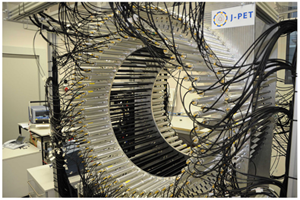 The European Society for Molecular Imaging prepared a broadcast in which Prof. Simon Cherry from the Davis University of California explains what is invented by Prof. dr. hab. Paweł Moskal and developed at the Jagiellonian University by the J-PET group positronium imaging.
The European Society for Molecular Imaging prepared a broadcast in which Prof. Simon Cherry from the Davis University of California explains what is invented by Prof. dr. hab. Paweł Moskal and developed at the Jagiellonian University by the J-PET group positronium imaging.
We cordially invite you to listen to the recording: https://e-smi.eu/podcast/
Competitive selection process notification for the post of an ASSISTANT PROFESSOR in the research and faculty staff member group at the M. Smoluchowski Institute of Physics
The RECTOR of the Jagiellonian University announces a competition for the position of ADIUNCT in the group of research and teaching staff at the Institute of Physics. M. Smoluchowski at the Faculty of Physics, Astronomy and Applied Computer Science in the discipline of physical science in the field of physics or biophysics.
Competition start date: 29.04.2022
The deadline for submitting applications expires on: 30.05.2022
The contest will be adjudicated by 30.09.2022
A promising route towards high-performance single-molecule magnets - publication in Nature Communications

The article "An 'Intermetallic' Molecular Nanomagnet with the Lanthanide Coordinated Only by Transition Metals" by Michał Magott, Maria Brzozowska, Stanisław Baran, Veacheslav Vieru, and Dawid Pinkowicz was published on April 19 in Nature Communications (Nat. Commun. 13 (2022) 2014, DOI: 10.1038 / s41467-022-29624-7). The article describes the crystal structure and magnetic properties of the compound [ErIII(ReICp2)3] belonging to a new class of molecular magnetics. In the materials known so far, the magnetic ion was surrounded by ligands which are p-electron elements (e.g., C, N, or O). The possibilities of the practical application of "classic" molecular magnetics are limited because the magnetic memory effect disappears at a temperature of about 80 K. The compound [ErIII(ReICp2)3] belongs to a new class of materials, where the magnetic ion (which in this case is Er) is symmetrically surrounded three ions of the d-electron element lying in one plane. Such a magnetic ion environment resembles that which occurs in the intermetallic compound SmCo5 - one of the materials for constructing the strongest permanent magnets. The newly discovered class of molecular magnetics, in which planarly arranged transition metal ions surround magnetic ions, gives hope for the synthesis of new compounds with better and better parameters from the point of view of potential applications. Some of the magnetic measurements were made at the "Laboratory of Advanced Magnetic Materials and Superconductivity" at our Institute. The lab is headed by dr hab. Stanisław Baran (Department of Solid State Physics).
Summer student internship program 2022.
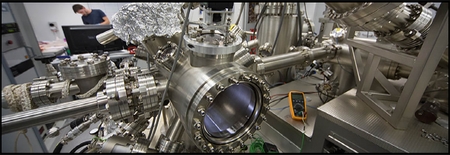 We invite bachelor's students (1st-cycle studies) to undergo obligatory student internships at the M. Smoluchowski Institute of Physics. We hope that participation in the internships offered by our Institute will allow you to experience an enjoyable scientific adventure in laboratories equipped with state-of-the-art research equipment and, at the same time, to participate in the vibrant cultural life of Krakow.
We invite bachelor's students (1st-cycle studies) to undergo obligatory student internships at the M. Smoluchowski Institute of Physics. We hope that participation in the internships offered by our Institute will allow you to experience an enjoyable scientific adventure in laboratories equipped with state-of-the-art research equipment and, at the same time, to participate in the vibrant cultural life of Krakow.
More information can be found here.
A PhD student from our Institute will compete in Beijing.
 For the second time in a row, the academic community of the Jagiellonian University will be represented at the Winter Olympics. Weronika Biela-Nowaczyk, PhD student at the Institute of Physics M. Smoluchowski at the Faculty of Physics, Astronomy and Applied Computer Science of the Jagiellonian University. - In snowboarding conditions, pole positioning and luck play a big role. I am going with a fighting attitude - announces the AZS player in Zakopane.
For the second time in a row, the academic community of the Jagiellonian University will be represented at the Winter Olympics. Weronika Biela-Nowaczyk, PhD student at the Institute of Physics M. Smoluchowski at the Faculty of Physics, Astronomy and Applied Computer Science of the Jagiellonian University. - In snowboarding conditions, pole positioning and luck play a big role. I am going with a fighting attitude - announces the AZS player in Zakopane.
The first-ever positronium image of a phantom made of heart myxoma and adipose tissue- publication in Science Advances.
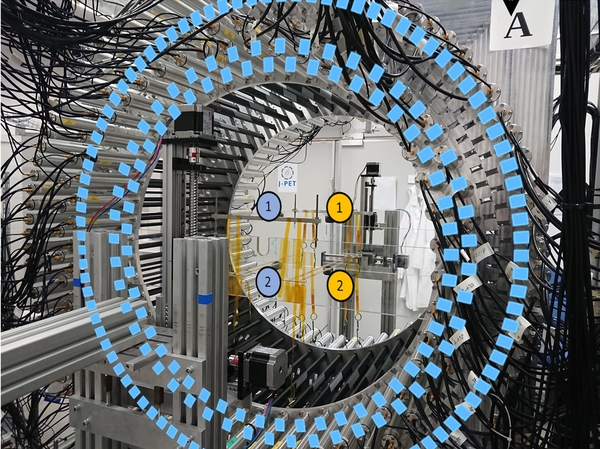 Our collegues Colleagues from the Department of Experimental Particle Physics and its Applications and the Department of Medical Physics of our Institute made the first positron imaging of a phantom made of heart myxoma and adipose tissue.
Our collegues Colleagues from the Department of Experimental Particle Physics and its Applications and the Department of Medical Physics of our Institute made the first positron imaging of a phantom made of heart myxoma and adipose tissue.
In vivo assessment of cancer and precise location of altered tissues at initial stages of molecular disorders are important diagnostic challenges. Positronium is copiously formed in the free molecular spaces in the patient’s body during positron emission tomography (PET). The positronium properties vary according to the size of inter- and intramolecular voids and the concentration of molecules in them such as, e.g., molecular oxygen, O2; therefore, positronium imaging may provide information about disease progression during the initial stages of molecular alterations. Current PET systems do not allow acquisition of positronium images. This study presents a new method that enables positronium imaging by simultaneous registration of annihilation photons and deexcitation photons from pharmaceuticals labeled with radionuclides. The first positronium imaging of a phantom built from cardiac myxoma and adipose tissue is demonstrated. It is anticipated that positronium imaging will substantially enhance the specificity of PET diagnostics.
J-PET group has tested symmetry between charged leptonic matter and antimatter - paper in Nature Communications.
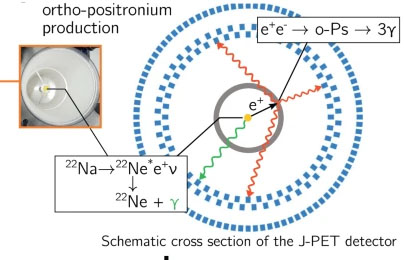
Charged lepton system symmetry under combined charge, parity, and time-reversal transformation (CPT) remains scarcely tested. Despite stringent quantum-electrodynamic limits, discrepancies in predictions for the electron–positron bound state (positronium atom) motivate further investigation, including fundamental symmetry tests. While CPT noninvariance effects could be manifested in non-vanishing angular correlations between final-state photons and spin of annihilating positronium, measurements were previously limited by knowledge of the latter. Here, we demonstrate tomographic reconstruction techniques applied to three-photon annihilations of ortho-positronium atoms to estimate their spin polarisation without magnetic field or polarised positronium source. We use a plastic-scintillator-based positron-emission-tomography scanner to record ortho-positronium (o-Ps) annihilations with single-event estimation of o-Ps spin and determine the complete spectrum of an angular correlation operator sensitive to CPT-violating effects. We find no violation at the precision level of 10−4, with an over threefold improvement on the previous measurement.
Nature Communications 12 (2021) Article number: 5658Frans Habraken Best Paper Award 2021 for Dr. Katarzyna Gajos
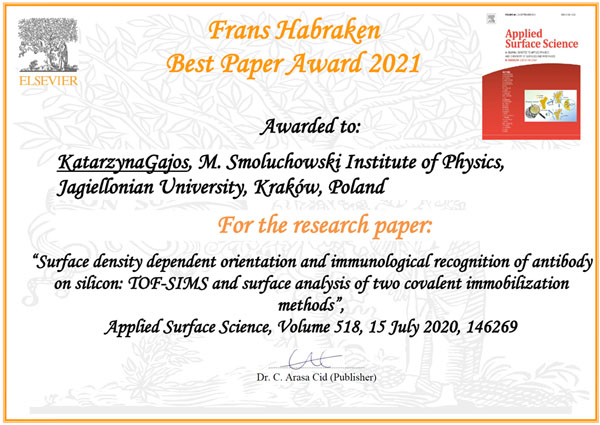
I am delighted to inform you that the editors of the Applied Surface Science journal (IF = 6.707) honored Dr. Katarzyna Gajos with the "Frans Habraken Best Paper Award 2021" for the work "Surface density dependent orientation and immunological recognition of antibody on silicon: TOF-SIMS and surface analysis of two covalent immobilization methods ”(DOI: 10.1016 / j.apsusc.2020.146269).
This award, commemorating Professor Frans Habraken, longtime editor of Applied Surface Science, has been awarded annually since 2014 to the first (or corresponding) author, aged up to 30, of the best scientific article published in this journal in the previous year. When choosing, the team of editors is guided by criteria such as the originality of the work, its scientific significance, and the interest of readers.
The distinguished work describes the research carried out by the team from the M. Smoluchowski Institute of Physics at the Jagiellonian University, composed of dr Katarzyna Gajos, mgr Klaudia Szafraniec, prof. dr hab. Andrzej Budkowski, in collaboration with Dr. Panagiota Petrou from NCSR DEMOKRITOS from Athens. Using TOF-SIMS Secondary Ion Mass Spectroscopy, the dominant orientation of the detection molecules (antibodies) was determined directly depending on the density of their coverage of the biosensor surface. As the orientation of antibodies is crucial for antigen recognition, the presented studies can help improve biosensors' efficiency and sensitivity by optimizing the methods of coating the biosensor surface with antibodies.
Professor nomination - prof. Monika Marzec
On 17 June 2021 the President of the Republic of Poland Andrzej Duda signed the professor nomination of dr hab. Monika Marzec from our Institute.
Congratulations !!!
Presentations of candidates for the positions of assistant and assistant professors - June 10, 2021
Ladies and gentlemen,Director of the Institute of Physics Marian Smoluchowski, the Jagiellonian University kindly informs that the presentations of candidates for the positions of assistant and assistant professors will take place on June 10, 2021 on the MSTeams platform according to the attached schedule.
Persons wishing to participate in public auditions of candidates and having an e-mail account in the "uj.edu.pl" domain (and thus access to the UJ organization in Microsoft Teams) can join the "UJ-WFAIS IFMS Candidate Presentations" team created for this purpose access code: uwef9by
To do this, in the Microsoft Teams application, select the "Teams" tab and then "All Teams" -> "Join a team or create a new one" -> "Join a team by entering the code" and enter the above access code. In the event of technical problems, please contact us at the following address :rona.fais@uj.edu.pl.
People who do not have an e-mail account in the "uj.edu.pl" domain and want to join the team are asked to send a message to the following address :rona.fais@uj.edu.pl in order to gain access by June 9 this year at the latest. until 12:00. After gaining access to the "UJ-WFAIS IFMS Candidate Presentations" team, please enter the "General" channel where the scheduled meeting (candidates' presentations) will take place.
We invite all interested parties IFMS Director
Institute deadline for submitting applications for promotion to the position of university professor
Dear Colleagues,
I would like to inform you that applications for promotion to the position of university professor should be submitted to the secretary's office of the Director of the Institute of Physics of the Jagiellonian University M Smoluchowski with Mr. Alicja Mysłek, by June 1, 2021.
The above date is earlier than the date set by the Dean of WFAIS. However, according to §10 point 1 of the promotion procedure, "The Dean of the Faculty shall submit an application for promotion to the position of university professor from the director of the institute in which the academic teacher who is a candidate for promotion is employed". Therefore, I would like to have time to read the conclusions calmly.
Kind regards
Zbigniew Postawa
/ Director of the Institute of Physics of the Jagiellonian University M. Smoluchowski /
Competition for two ADIUNKT positions in the group of research and teaching staff at the Institute of Physics in the field of physics or biophysics - ad expired
The Rector of the Jagiellonian University announces a competition for two ADIUNKT positions in the group of research and teaching staff at the Institute of Physics at the Faculty of Physics, Astronomy and Applied Computer Science of the Jagiellonian University in the field of physics or biophysics.
Competition start date: April 28, 2021
The deadline for submitting applications is May 28, 2021
The competition will be adjudicated by June 24, 2021
Competition for the position of an ASSISTANT at the Institute of Physics of the Jagiellonian University in the field of physics or biophysics - ad expired
The Rector of the Jagiellonian University announces a competition for the position of ASSISTANT in the group of research and teaching staff at the Institute of Physics of the Jagiellonian University at the Faculty of Physics, Astronomy and Applied Computer Science of the Jagiellonian University in the field of physics or biophysics.
Professor nomination - prof. Jakub Rysz
On February 11, 2021 the President of the Republic of Poland Andrzej Duda signed the professor nomination of dr hab. Jakub Rysz from our Institute.
Congratulations !!!
Professor nomination - prof. Janusz Brzychczyk
On January 20, 2021 the President of the Republic of Poland, Andrzej Duda, signed the professor nomination of dr hab. Janusz Brzychczyk from our Institute..
Congratulations !!!
Nominacje profesorskie - prof. Piotr Cyganik, Hubert Harańczyk, Ewa Stępień
W dniu 4 stycznia 2021 roku Prezydent Rzeczypospolitej Polskiej Andrzej Duda podpisał nominacje profesorskie dla dra hab. Piotra Cyganika, dra hab. Huberta Harańczyka i dr hab. Ewy Stępień z naszego Instytutu.
Serdecznie gratulujemy !!!
Nominacje profesorskie - prof. Piotr Cyganik, Hubert Harańczyk, Ewa Stępień
W dniu 4 stycznia 2021 roku Prezydent Rzeczypospolitej Polskiej Andrzej Duda podpisał nominacje profesorskie dla dra hab. Piotra Cyganika, dra hab. Huberta Harańczyka i dr hab. Ewy Stępień z naszego Instytutu.
Serdecznie gratulujemy !!!
Nominacje profesorskie - prof. Piotr Cyganik, Hubert Harańczyk, Ewa Stępień
W dniu 4 stycznia 2021 roku Prezydent Rzeczypospolitej Polskiej Andrzej Duda podpisał nominacje profesorskie dla dra hab. Piotra Cyganika, dra hab. Huberta Harańczyka i dr hab. Ewy Stępień z naszego Instytutu.
Serdecznie gratulujemy !!!
Nominacje profesorskie - prof. Piotr Cyganik, Hubert Harańczyk, Ewa Stępień
W dniu 4 stycznia 2021 roku Prezydent Rzeczypospolitej Polskiej Andrzej Duda podpisał nominacje profesorskie dla dra hab. Piotra Cyganika, dra hab. Huberta Harańczyka i dr hab. Ewy Stępień z naszego Instytutu.
Serdecznie gratulujemy !!!
Nominacje profesorskie - prof. Piotr Cyganik, Hubert Harańczyk, Ewa Stępień
W dniu 4 stycznia 2021 roku Prezydent Rzeczypospolitej Polskiej Andrzej Duda podpisał nominacje profesorskie dla dra hab. Piotra Cyganika, dra hab. Huberta Harańczyka i dr hab. Ewy Stępień z naszego Instytutu.
Serdecznie gratulujemy !!!
Nominacje profesorskie - prof. Piotr Cyganik, Hubert Harańczyk, Ewa Stępień
W dniu 4 stycznia 2021 roku Prezydent Rzeczypospolitej Polskiej Andrzej Duda podpisał nominacje profesorskie dla dra hab. Piotra Cyganika, dra hab. Huberta Harańczyka i dr hab. Ewy Stępień z naszego Instytutu.
Serdecznie gratulujemy !!!
Nominacje profesorskie - prof. Piotr Cyganik, Hubert Harańczyk, Ewa Stępień
W dniu 4 stycznia 2021 roku Prezydent Rzeczypospolitej Polskiej Andrzej Duda podpisał nominacje profesorskie dla dra hab. Piotra Cyganika, dra hab. Huberta Harańczyka i dr hab. Ewy Stępień z naszego Instytutu.
Serdecznie gratulujemy !!!
